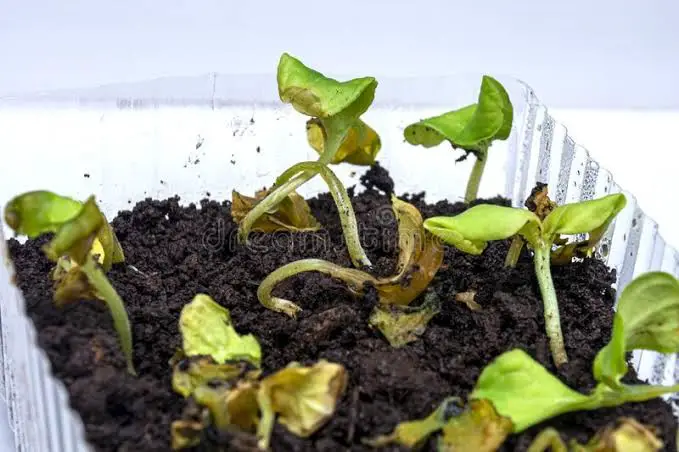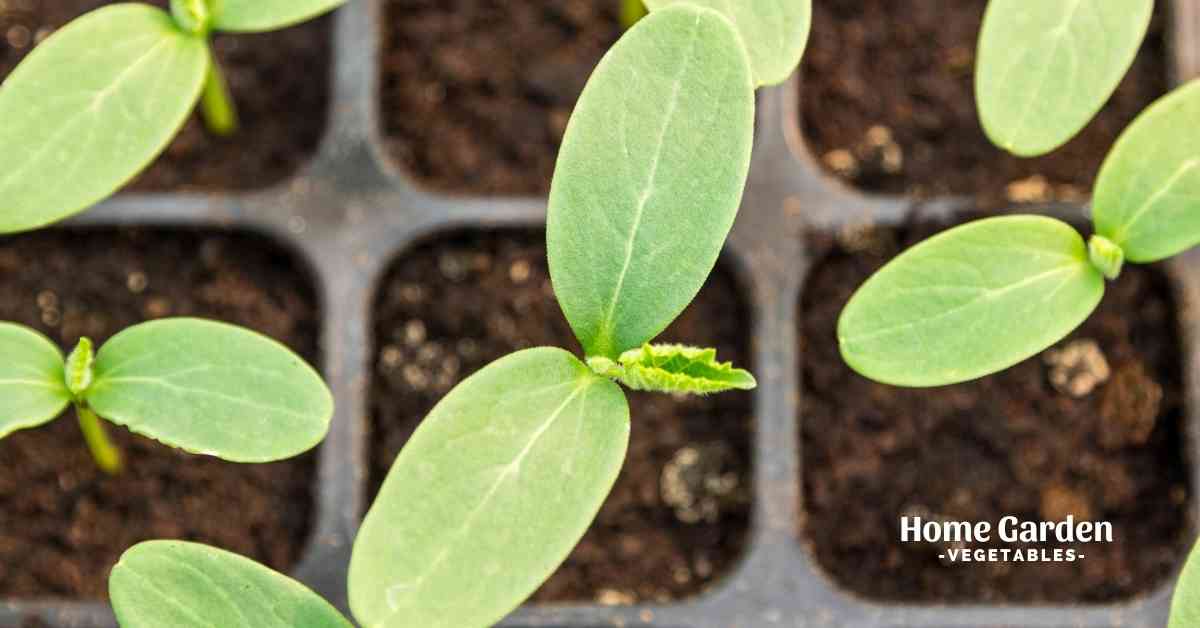Cucumbers are a must-have in every summer garden. Cucumber seeds can suffer some common problems causing them to wilt or die in the early stages of growth. Read on to find out all there is to know from the causes to solutions.
Cucumber Growing Conditions
Before we look at specific causes let’s look at the growing conditions needed for successfully growing cucumbers. I am assuming here that you have young cucumber seedlings that are wilting after germination or very young before the fruit has started to set. These are the basic conditions for growing cucumber seeds.
Reader Poll: What online courses would interest you?
Sunlight
Depending on the variety cucumber plants need 6 to 8 hours of sunlight. However, too much sun can scorch the leaves especially when the plant is young and underdeveloped. If you have the cucumber seedlings outside or in a hot greenhouse try starting them on a cool windowsill or shady spot in the greenhouse. Also, see below on water requirements.
Temperature
Mature cucumber plants can withstand high temperatures however the seedlings are more susceptible to high temperatures and low temperatures as they like a consistent temperature of 65-75 degrees F. (18-23 C.) so if you have a heat wave try to keep them cool by moving seedlings and if the nights are cooler again move them to an area where the environment is more consistent or if keeping them in a greenhouse consider a heater. Personally, I find starting them indoors on a window ledge to be the best place to get them started.
Soil
Cucumber cultivation can be thriving in various soil conditions, with loose, well-drained soil rich in organic matter and plant nutrients being the most ideal. In case the soil lacks organic matter, it is advisable to incorporate a layer of 4-6 inches of fully decomposed compost or other humus matter to a depth of 10 inches. The pH level of the soil should be maintained between 6.0 and 6.5 to ensure optimal growth. Moreover, it is essential to maintain the soil temperature at a minimum of 60 degrees Fahrenheit before planting the seeds to guarantee proper germination.
Subscribe to our newsletter!
Water
If you have provided all of the following consistently and the seedlings or young plants are still wilting or dying read on to find out what else will cause this.
If your cucumber plants are withering, the first thing to look at is your watering schedule. Cucumbers need roughly 1-2 inches of water each week. The moisture in your soil may be measured with a soil meter.
This is mostly due to bacterial wilt. Cucumbers lose their shape as a result of the frequent drooping of their leaves. Erwinia Tracheophyta, a bacterium that causes bacterial wilt, is carried by cucumber beetles.

The withering of your cucumber seedlings may be natural, but if the illness spreads to the rest of your cucumbers, you can be sure that the disease has reached them all.
Another possibility is that you’re overwatering your cucumber seedlings. Cucumber seedlings, especially in the summer and when the weather is scorching outside, need watering.
This will have the same effect on your plant no matter how healthy it is or isn’t. If the earth is dripping, you may have overwatered. When you can squeeze it, it means the earth is losing moisture. You should consider these options if your cucumber seedling dies.
Pests
Your plants should be checked out for any holes or missing leaves. A sign that they are being devoured by some other creature. One of the main culprits is cucumber bugs, which are tiny and ferocious feeders. Aphids, which eat cucumber plants and ultimately destroy them, may attack them.
Cucumber plants are harmed as well as spread Wilt Disease by these pests. Whiteflies, which feed on and lay eggs on cucumber plants’ leaves, may also pose a threat. In addition to eating the leaves, these bugs turn the sap yellow from the sucking. The ideal strategy is to use an insecticide that can kill both the cucumber leafroller and the cucumber root maggot.
Soil Temperatures Are Out Of Whack
Too hot or too cold soil temperatures will kill your cucumber seedlings. The ideal soil temperature is between 65 and 75 degrees Fahrenheit. The germination of your cucumber plant will be hindered by the presence of chilly air and cold soil. A bottom heat source is ideal for stony soil.
Planting Depth Error
Seeds will not grow if they are sown too shallowly because they will be exposed to too much light. Seeds can’t germinate if they’re planted too deep in the ground.
Ailment That Prevents You From Getting Around
Cucumber seeds may be infected by this disease, which can limit their growth or prevent them from sprouting. This might be caused by soil conditions that are too wet or saturated. Pathogens thrive in these soil conditions, and the seeds die before they have a chance to germinate.
Poor soil drainage, poor air circulation, and dirty pots or containers are all contributing factors to the development of this illness.
Moss And Mold
If your seeds are left in a water-filled container, they may grow moss and mold. If cucumber seedlings exhibit indications of this, they may die a slow death.
As a result of the destruction of the cucumber’s roots, it is difficult to grow one. If there is no sunlight, water and soil cannot be drained or evaporated.
There Are Cutworms In The Area
Cutworms, which devour the leaves, stems, and roots of cucumbers, are common pests in the garden. Cucumber seedlings can’t develop any further if bugs coiled up in the soil are consuming them. This will happen over time.
Insufficient Amounts Of Natural Light
Cucumber seedlings may not germinate correctly if they are too distant from the light. Sunlight is essential for the growth of your cucumber. For them to germinate, you must place them in a location that receives a lot of sunlight. A wide range of insects and pests may be found in the soil, as well.
More Fertilizer Required
If you over-fertilize your cucumber seedlings, or if you do it often, you may have fertilizer burn. Wait a few weeks before fertilizing newly planted plants, whether in a container or the ground.
A lack of nutrients in the soil might hinder the growth of cucumber seedlings. To keep your cucumber seedlings growing, you’ll need to provide some fertilizer.
Overcrowding
Cucumber seedlings will not germinate rapidly if you put too many of them in the same place or container at once. Seedlings will fight to the death to prevent wilting or death.
Consolidated Gravel:
This kind of soil is characterized by poor air circulation and poor drainage. A lack of drainage will cause the soil to get saturated, which will ultimately lead to the rot of seeds.
Exposure To The Sun In Excess
Too much sunlight may harm cucumber seedlings in the same way that keeping them in the shade might kill them.
If left in the sun for a lengthy period, cucumber seedlings may have developmental delays or possibly die. Cucumber seedlings need a break from direct sunlight every 12 to 14 hours.
The Presence Of A Fungal Growth
Infected cucumber seedlings won’t have an opportunity to grow into cucumbers because of the fungus they’ve contracted. A white, powdery covering on the leaves of your plant indicates the presence of fungus, which is stealing nutrients from it. However, even if your cucumber seeds grow and become robust, their growth will be gradual.
It is possible to inhibit the growth of this fungus or mildew by sprinkling neem oil on the soil around the plant. Avoid applying the oil while it is hot outside by waiting until it is below 80 degrees Fahrenheit before doing so.
Conclusion
Cucumbers are a wonderful and easy-to-grow fruit that everyone loves! That being the case, why are my poor cucumber plants dying? Excellent skill for a gardener is troubleshooting. Let’s see if we can rescue those poor cucumbers!

